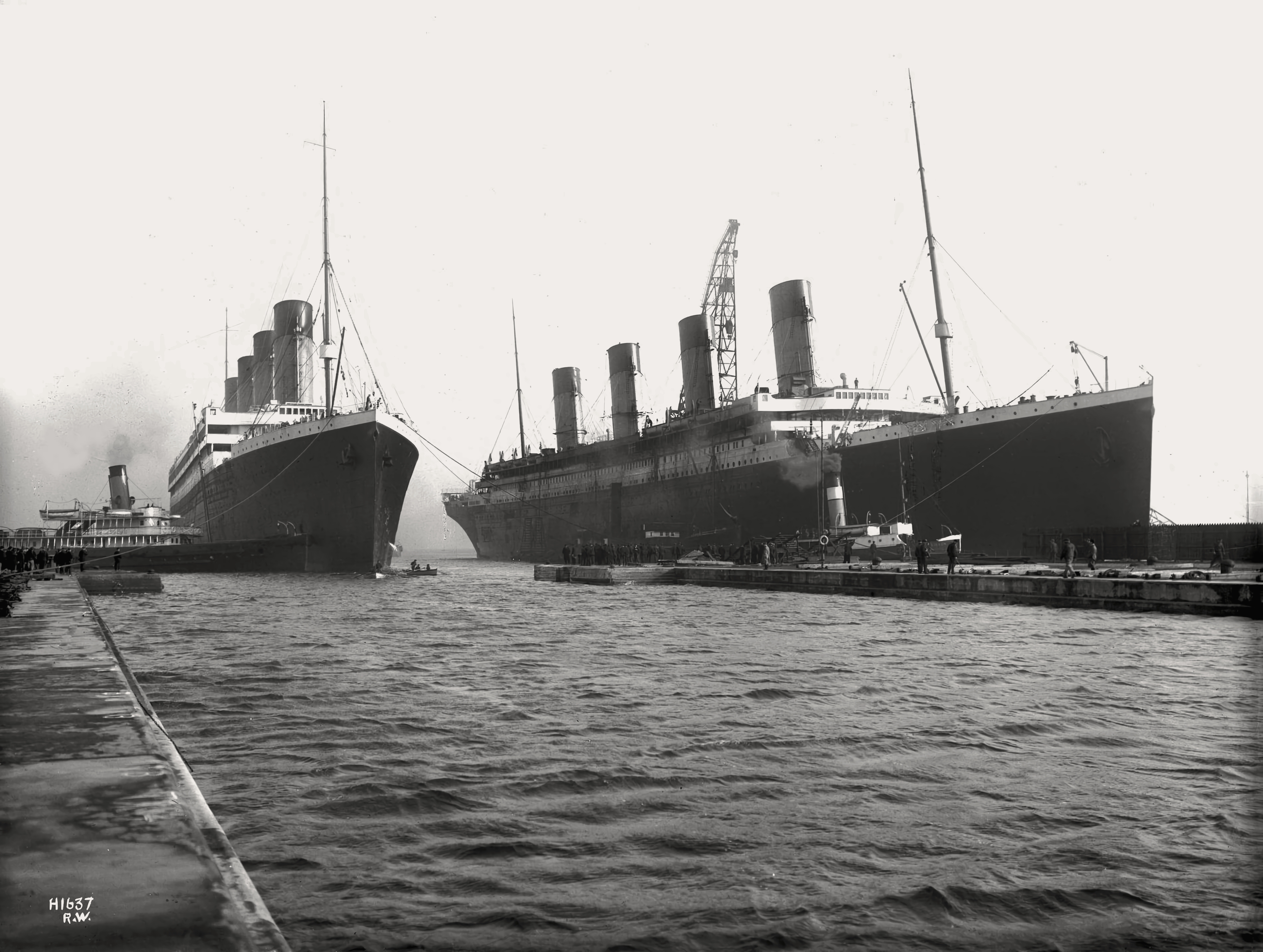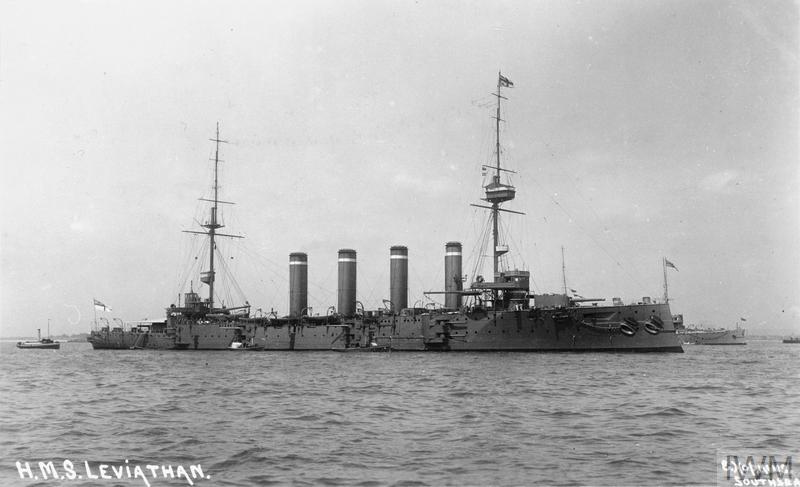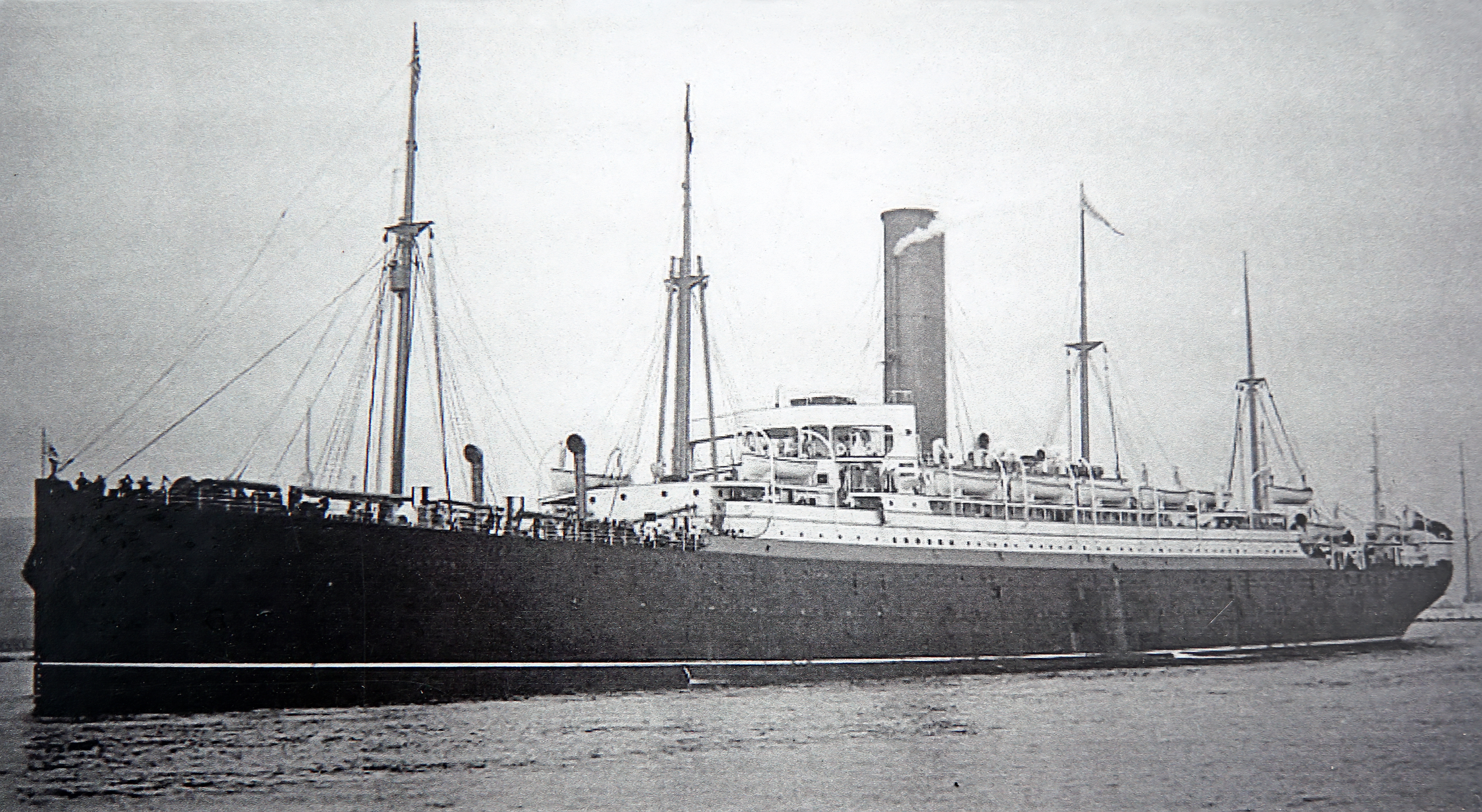|
John Gibb Dunlop
John Gibb Dunlop (1844–1913) was a Scottish engineer and shipbuilder who ran John Brown Shipbuilders for many years. He is best remembered as the person in charge of the building of the ill-fated RMS Lusitania and the renowned RMS Aquitania. Life He was born in Polmont near Falkirk on 28 September 1844, the second son of Robert Dunlop (b.1819) a farmer, and his wife Mary Gibb. In the 1861 they were living at Claret farmhouse near Polmont. Around 1862 he was apprenticed to Randolph, Elder & Company, shipbuilders in Glasgow. He was with the company in 1864 when they founded the Fairfield Shipbuilding and Engineering Company. Around 1879 he left Fairfield and joined the Orient Line in London as Superintendent Engineer. Hs family lived at 115 Edwards Road in Hackney. In 1887 he returned to Scotland to work for J & G Thomson at Clydebank. He was then living at Scotstownhill in Renfrewshire. In 1895 Thomson's yard was taken over by John Brown & Co. Here he rose rapidly, ... [...More Info...] [...Related Items...] OR: [Wikipedia] [Google] [Baidu] |
John Brown & Company
John Brown and Company of Clydebank was a Scottish Naval architecture, marine engineering and shipbuilding firm. It built many notable and world-famous ships including , , , , , and the ''Queen Elizabeth 2 (ship), Queen Elizabeth 2''. At its height, from 1900 to the 1950s, it was one of the most highly regarded, and internationally famous, shipbuilding companies in the world. However thereafter, along with other UK shipbuilders, John Brown's found it increasingly difficult to compete with the emerging shipyards in Eastern Europe and the far East. In 1968 John Brown's merged with other Clydeside shipyards to form the Upper Clyde Shipbuilders consortium, but that collapsed in 1971. The company then withdrew from shipbuilding but its engineering arm remained successful in the manufacture of industrial gas turbines. In 1986 it became a wholly owned subsidiary of Trafalgar House (company), Trafalgar House, which in 1996 was taken over by Kvaerner. The latter closed the Clydebank en ... [...More Info...] [...Related Items...] OR: [Wikipedia] [Google] [Baidu] |
John Brown (shipbuilder)
John Brown and Company of Clydebank was a Scottish marine engineering and shipbuilding firm. It built many notable and world-famous ships including , , , , , and the ''Queen Elizabeth 2''. At its height, from 1900 to the 1950s, it was one of the most highly regarded, and internationally famous, shipbuilding companies in the world. However thereafter, along with other UK shipbuilders, John Brown's found it increasingly difficult to compete with the emerging shipyards in Eastern Europe and the far East. In 1968 John Brown's merged with other Clydeside shipyards to form the Upper Clyde Shipbuilders consortium, but that collapsed in 1971. The company then withdrew from shipbuilding but its engineering arm remained successful in the manufacture of industrial gas turbines. In 1986 it became a wholly owned subsidiary of Trafalgar House, which in 1996 was taken over by Kvaerner. The latter closed the Clydebank engineering works in 2000. Marathon Manufacturing Company bought the Cly ... [...More Info...] [...Related Items...] OR: [Wikipedia] [Google] [Baidu] |
RMS Aquitania
RMS ''Aquitania'' was a British ocean liner of the Cunard Line in service from 1914 to 1950. She was designed by Leonard Peskett and built by John Brown & Company in Clydebank, Scotland. She was launched on 21 April 1913 and sailed on her maiden voyage from Liverpool to New York on 30 May 1914. ''Aquitania'' was the third in Cunard Line's ''grand trio'' of express liners, preceded by and , and was the last surviving four-funnelled ocean liner. Shortly after ''Aquitania'' entered service, World War I broke out, during which she was first converted into an auxiliary cruiser before being used as a troop transport and a hospital ship, notably as part of the Dardanelles Campaign. Returned to transatlantic passenger service in 1920, she served alongside the ''Mauretania'' and the ''Berengaria''. Considered during this period of time as one of the most attractive ships, ''Aquitania'' earned the nickname "the Ship Beautiful" from her passengers. She continued in service after t ... [...More Info...] [...Related Items...] OR: [Wikipedia] [Google] [Baidu] |
Govan
Govan ( ; Cumbric?: ''Gwovan'?''; Scots: ''Gouan''; Scottish Gaelic: ''Baile a' Ghobhainn'') is a district, parish, and former burgh now part of south-west City of Glasgow, Scotland. It is situated west of Glasgow city centre, on the south bank of the River Clyde, opposite the mouth of the River Kelvin and the district of Partick. Historically it was part of the County of Lanark. In the early medieval period, the site of the present Govan Old churchyard was established as a Christian centre for the Brittonic Kingdom of Alt Clut (Dumbarton Rock) and its successor realm, the Kingdom of Strathclyde. This latter kingdom, established in the aftermath of the Viking siege and capture of Alt Clut by Vikings from Dublin in AD 870, created the sandstone sculptures known today as the Govan Stones. Govan was the site of a ford and later a ferry which linked the area with Partick for seasonal cattle drovers. In the eighteenth and nineteenth centuries, textile mills and coal mining were ... [...More Info...] [...Related Items...] OR: [Wikipedia] [Google] [Baidu] |
Cunard Line
Cunard () is a British shipping and cruise line based at Carnival House at Southampton, England, operated by Carnival UK and owned by Carnival Corporation & plc. Since 2011, Cunard and its three ships have been registered in Hamilton, Bermuda. In 1839, Samuel Cunard was awarded the first British transatlantic steamship mail contract, and the next year formed the British and North American Royal Mail Steam-Packet Company in Glasgow with shipowner Sir George Burns together with Robert Napier, the famous Scottish steamship engine designer and builder, to operate the line's four pioneer paddle steamers on the Liverpool–Halifax–Boston route. For most of the next 30 years, Cunard held the Blue Riband for the fastest Atlantic voyage. However, in the 1870s Cunard fell behind its rivals, the White Star Line and the Inman Line. To meet this competition, in 1879 the firm was reorganised as the Cunard Steamship Company, Ltd, to raise capital. In 1902, White Star joined the Ame ... [...More Info...] [...Related Items...] OR: [Wikipedia] [Google] [Baidu] |
HMS Leviathan (1901)
HMS ''Leviathan'' was one of four armoured cruisers built for the Royal Navy around 1900. She was assigned to the China Station upon completion and then served in the Mediterranean Fleet in 1905–06. She was assigned to the 7th Cruiser Squadron in 1907 before she was briefly reduced to reserve. ''Leviathan'' was recommissioned in 1909 for service with the 4th Cruiser Squadron before she was placed in reserve in 1913. Recommissioned in mid-1914, she was assigned to the 6th Cruiser Squadron of the Grand Fleet at the beginning of World War I. She spent most of the rest of the year searching for German commerce raiders and escorting convoys before she became flagship of the 1st Cruiser Squadron. In early 1915, she was reassigned to the 6th Cruiser Squadron before she became flagship of the North America and West Indies Station, based at the Royal Naval Dockyard, Bermuda, Royal Naval Dockyard in the Imperial fortress British Overseas Territory, colony of Bermuda, in March. ''Le ... [...More Info...] [...Related Items...] OR: [Wikipedia] [Google] [Baidu] |
HMS Bacchante (1901)
HMS ''Bacchante'' was a armoured cruiser built for the Royal Navy around 1900. Upon completion she was assigned to the Mediterranean Fleet as flagship of the fleet's cruiser squadron. She was reduced to reserve upon her return home in 1905 before returning to the Mediterranean in 1906. Six years later she returned home and was again placed in reserve. Recommissioned at the start of World War I, ''Bacchante'' became flagship of the 7th Cruiser Squadron. She was present at the Battle of Heligoland Bight a few weeks after the war began, but saw no combat. She was transferred to convoy escort duties in the Bay of Biscay in late 1914 before being sent to Egypt in early 1915. ''Bacchante'' was then assigned to support Anzac troops during the Gallipoli Campaign by providing naval gunfire. She covered the landing at Anzac Cove in April as well as several subsequent operations. Returning home in late 1916, she became the flagship of the 9th Cruiser Squadron on convoy escort duties ... [...More Info...] [...Related Items...] OR: [Wikipedia] [Google] [Baidu] |
SS Zeeland (1901)
SS ''Zeeland'' was a British and Belgian ocean liner of the International Mercantile Marine Co. (IMM). She was a sister ship to and a near sister ship to and of the same company. Although her name was Dutch, it was changed during World War I to the less German-sounding SS ''Northland''. She served for a time as a British troop ship under the name HMT ''Northland''. Reverting to ''Zeeland'' after the war, the ship was renamed SS ''Minnesota'' late in her career. ''Zeeland'' sailed primarily for IMM's Red Star Line for most of her early career, but also sailed under charter for the White Star Line (later White Star-Dominion), the International Navigation Company, the American Line, and the Atlantic Transport Line, all IMM subsidiary lines. The pursers safe survived the scrapyard at Inverkeithing and after residing in a wardrobe for 80 years is currently on display in a local private home. Early career In July 1899, the Red Star Line announced plans for the construction of four ... [...More Info...] [...Related Items...] OR: [Wikipedia] [Google] [Baidu] |
SS Vaderland (1900)
SS ''Vaderland'' was an ocean liner launched in July 1900 for the Red Star Line service between Antwerp and New York. During her passenger career, the ship initially sailed under British registry, but was re-registered in Antwerp in 1903. ''Vaderland'' was a sister ship to and a near sister ship to and . After the beginning of the First World War, ''Vaderland'' was re-registered in Liverpool and converted to a troopship, ferrying troops of the Canadian Expeditionary Force from Halifax to Liverpool. While under the operation of White Star–Dominion in 1915, she was renamed ''Southland'' to avoid the German-sounding ''Vaderland''. In September 1915, ''Southland'' was torpedoed in the Aegean Sea by German submarine with the loss of 40 men. The ship was beached, repaired, and returned to service in August 1916. While in service between the United Kingdom and Canada on 4 June 1917, ''Southland'' was torpedoed a second time, this time by ; she was sunk off the coast of Irelan ... [...More Info...] [...Related Items...] OR: [Wikipedia] [Google] [Baidu] |
RMS Saxonia (1899)
The first RMS ''Saxonia'' was a passenger ship of the British Cunard Line. Between 1900 and 1925, ''Saxonia'' operated on North Atlantic and Mediterranean passenger routes, and she saw military service during World War I (1914–1918). ''Saxonia''s sister ship was '' Ivernia''. Design Around 1900, the Cunard Line faced tight competition from the British White Star Line and the German lines Norddeutscher Lloyd and Hamburg America (HAPAG). Cunards largest liners, as of 1898 and , had a reputation for size and speed, both being of 12,950 gross register tons (grt) and having held the Blue Riband for the fastest crossing of the Atlantic Ocean. However, Norddeutscher Lloyds new liner had taken the Blue Riband from them in 1897, while White Star was planning to place a new 17,000-grt liner, RMS ''Oceanic'' into service. In response, Cunard updated its fleet, ordering new liners including the sister ships and RMS ''Saxonia'' (both launched in late 1899) and (launched in mid-19 ... [...More Info...] [...Related Items...] OR: [Wikipedia] [Google] [Baidu] |
Stobhill
Stobhill is a district in the Scottish city of Glasgow. It is situated north of the River Clyde. Part of Springburn, it gives its name to Stobhill Hospital Stobhill Hospital is an Ambulatory Care and Diagnostic Hospital, located in Springburn in the north of Glasgow, Scotland. It serves the population of North Glasgow and part of East Dunbartonshire. It is managed by NHS Greater Glasgow and Clyde. .... Areas of Glasgow Springburn {{Glasgow-geo-stub ... [...More Info...] [...Related Items...] OR: [Wikipedia] [Google] [Baidu] |
Glasgow Necropolis
The Glasgow Necropolis is a Victorian cemetery in Glasgow, Scotland. It is on a low but very prominent hill to the east of Glasgow Cathedral (St. Mungo's Cathedral). Fifty thousand individuals have been buried here. Typical for the period, only a small percentage are named on monuments and not every grave has a stone. Approximately 3,500 monuments exist here. Background Following the creation of Père Lachaise Cemetery in Paris a wave of pressure began for cemeteries in Britain. This required a change in the law to allow burial for profit. Previously the parish church held responsibility for burying the dead but there was a growing need for an alternative. Glasgow was one of the first to join this campaign, having a growing population, with fewer and fewer attending church. Led by Lord Provost James Ewing of Strathleven, the planning of the cemetery was started by the Merchants' House of Glasgow in 1831, in anticipation of a change in the law. The Cemeteries Act was passed in 18 ... [...More Info...] [...Related Items...] OR: [Wikipedia] [Google] [Baidu] |






_Collection_Q44372.jpg)

